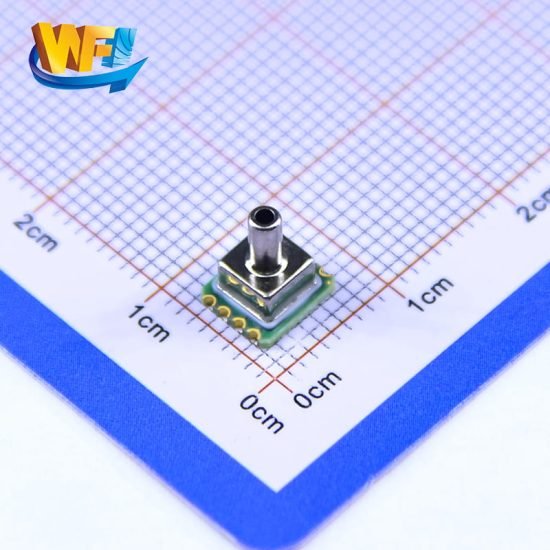Catalogar
Introducción
Air pressure sensors play a vital role in countless industries—from automotive systems to medical devices. When these sensors deliver stable and accurate readings day after day, it makes all the difference between efficient operations and critical errors. In this article, we explore Estabilidad del sensor de presión del aire in detail.
What is the Importance of a Pressure Sensor?
A pressure sensor is a key component that measures the force applied by a fluid—whether gas or liquid—against a surface. This measurement is integral to numerous systems. Take, for example, the role of pressure sensors in ensuring that industrial machines function correctly. If the sensor is off by even a small amount, it can lead to improper system behavior or safety hazards.
Pressure sensors are essential for:
Safety: In systems such as medical ventilators or automotive airbag controls, precise sensor readings are critical.
Efficiency: In industrial processes, accurate pressure data ensures consistent product quality and energy savings.
Automation: Robotics and process controls rely on accurate pressure readings to maintain balance and productivity.

What is the Stability of a Pressure Sensor?
The term “stability” in the context of pressure sensors refers to the sensor’s ability to maintain its accuracy over time. A stable sensor ensures that the data it outputs does not significantly drift even after prolonged use. In our field, stability is measured by how consistently a sensor performs under varying conditions, including temperature, humidity, and mechanical vibration.
Factors Affecting Stability:
Material Quality: High-grade alloys and ceramics minimize wear and corrosion.
Design Architecture: Advanced sealing techniques help protect the sensor from environmental factors.
Temperature Compensation: Many sensors come with built-in compensation circuits to offset thermal fluctuations.
What is the Stability of a Sensor in Real-World Use?
Real-world application is where theory meets practice. In the lab, a sensor might demonstrate outstanding stability, but industrial conditions can test its limits. Let’s consider an example:
In a recent project, we compared two air pressure sensors in a controlled environment:
Sensor X: A standard sensor showing about a +1.0% drift over a six-month period.
Sensor Y: An industrial-grade sensor maintaining only +0.1% drift during the same period.
These differences are significant when you consider that even a small drift can trigger false alarms or misreadings in critical systems.
Why Air Pressure Sensor Stability Matters in Industrial Applications
Industries such as automotive, HVAC, food processing, and aerospace heavily rely on air pressure sensors. In these sectors, even minor inaccuracies may lead to system inefficiency or dangerous failures.
Key Industrial Use-Cases:
Automotive Industry: Air pressure sensors regulate tire pressures and monitor engine combustion for optimized performance.
HVAC Systems: Consistent readings help manage airflow and energy efficiency in large buildings.
Food Processing: Precise pressure controls ensure safety and quality in packaging lines.
Aerospace: High stability guarantees the proper function of flight systems where even the slightest error can have drastic consequences.
How to Measure and Maintain Air Pressure Sensor Stability
Knowing that sensor stability is crucial is only half the battle. The other half is knowing how to measure and maintain it. Here are some practical steps and tools that you can use:
Essential Tools and Practices:
Data Loggers: Use these to continuously record sensor output data over time. A data logger will help detect any drift trends.
Precision Multimeters: These are important for accurately measuring small voltage changes that indicate sensor drift.
Thermal Chambers: Run your sensors through controlled temperature variations to test their stability under thermal stress.
Actionable Tips:
- Environmental Protection: Use enclosures and cable shielding to minimize the impact of electromagnetic interference (EMI) and temperature fluctuations.
Benchmarking: Periodically compare your sensors against a known reference or standard. Document the performance to track trends over time.
Vendor Support: Choose manufacturers who provide detailed drift specifications and long-term performance data.
Conclusión
In conclusion, the importance of air pressure sensor stability cannot be overstated. It’s a critical component that directly influences the reliability and safety of numerous systems. Through this article, we have explored:
What is the importance of a pressure sensor? and how its accurate performance is tied to overall safety and efficiency.
What is the stability of a pressure sensor? and why material quality, design, and temperature compensation are essential.
What is the stability of a sensor in real-world conditions? reinforced by practical examples and actionable tests.
Why industrial applications demand high stability sensors to avoid costly system failures and ensure smooth operations.
How to measure and maintain sensor stability using tools like data loggers, precision instruments, and regular calibration.
La introducción anterior sólo toca la superficie de las aplicaciones de la tecnología de sensores de presión. Continuaremos explorando los diferentes tipos de elementos sensores utilizados en diversos productos, cómo funcionan y sus ventajas y desventajas. Si desea obtener más detalles sobre lo que se analiza aquí, puede consultar el contenido relacionado más adelante en esta guía. Si tiene poco tiempo, también puede hacer clic aquí para descargar los detalles de estas guías. Producto del sensor de presión de aire datos PDF.
Para obtener más información sobre otras tecnologías de sensores, por favor Visite nuestra página de sensores.

I needed to thank you for this excellent read!! I certainly enjoyed every bit of it. I’ve got you bookmarked to check out new things you post…
Hi, this weekend is pleasant in support of me, because this moment i am reading this fantastic educational article here at my residence.
Very soon this site will be famous among all blogging and site-building users, due to it’s pleasant content
Have you ever considered about adding a little bit more than just your articles? I mean, what you say is valuable and everything. But just imagine if you added some great visuals or videos to give your posts more, «pop»! Your content is excellent but with pics and video clips, this website could certainly be one of the most beneficial in its field. Excellent blog!
Wow, this post is fastidious, my sister is analyzing these kinds of things, thus I am going to convey her.